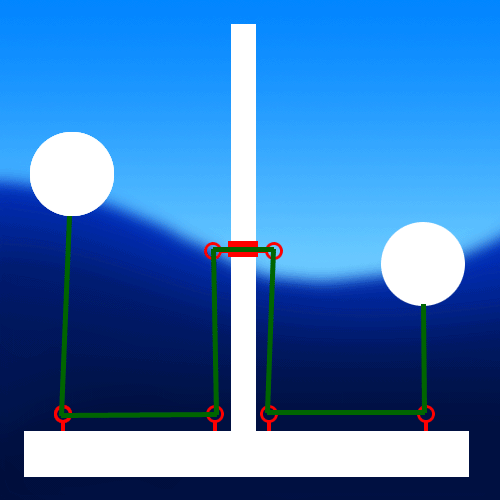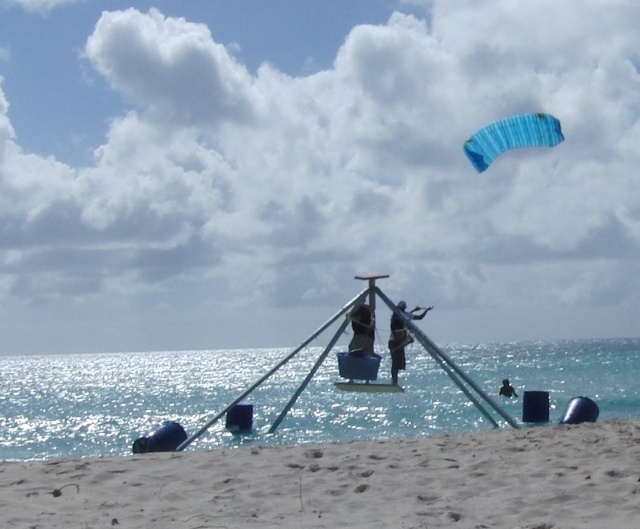Difference between revisions of "User:Vincecate/WaterWalker3"
(New page: I like the idea of having pairs of buoys connected by a rope going through pulleys that DM8954 came up with and made the animation below. Image:DualBuoyAnimation.gif If I had a 4...) |
|||
| (6 intermediate revisions by the same user not shown) | |||
| Line 1: | Line 1: | ||
| − | + | I like the idea of having pairs of buoys connected by a rope going through pulleys that [[User:DM8954]] illustrated with the animation below. | |
| − | |||
| − | I like the idea of having pairs of buoys connected by a rope going through pulleys that DM8954 | ||
[[Image:DualBuoyAnimation.gif]] | [[Image:DualBuoyAnimation.gif]] | ||
| Line 7: | Line 5: | ||
If I had a 4-leg WaterWalker with buoy pairs on opposite corners and computer controlled brake controlling how much the rope between each pair was allowed to move, I think I could have an amazingly stable platform with just 4 big buoys. In general I don't like active controls but we could have limits on how far the rope could go either way, and if the brake or computer broke it would just tip a certain amount. Could have redundant brakes and computers, and a manual brake. | If I had a 4-leg WaterWalker with buoy pairs on opposite corners and computer controlled brake controlling how much the rope between each pair was allowed to move, I think I could have an amazingly stable platform with just 4 big buoys. In general I don't like active controls but we could have limits on how far the rope could go either way, and if the brake or computer broke it would just tip a certain amount. Could have redundant brakes and computers, and a manual brake. | ||
| − | An alternative is to have a [[hanging ballast]] that keeps the platform level and then no brakes or computers would be needed. | + | It could work without the thing to adjust the tension. In this case the structure would go up and down with big waves but could still be made to not tip. |
| + | |||
| + | An alternative is to have a [[HangingBallast|hanging ballast]] that keeps the platform level and then no brakes or computers would be needed. | ||
[[Image:WaterWalker2WithKite.JPG|640px]] | [[Image:WaterWalker2WithKite.JPG|640px]] | ||
| + | |||
| + | But I worry that any design that has moving parts has more things that will fail. Like if a squid or something gets jammed in the pulley. | ||
| + | So I am a bit uncomfortable with this idea and probably won't do anything with it. But it is interesting. | ||
Latest revision as of 14:15, 2 February 2010
I like the idea of having pairs of buoys connected by a rope going through pulleys that User:DM8954 illustrated with the animation below.
If I had a 4-leg WaterWalker with buoy pairs on opposite corners and computer controlled brake controlling how much the rope between each pair was allowed to move, I think I could have an amazingly stable platform with just 4 big buoys. In general I don't like active controls but we could have limits on how far the rope could go either way, and if the brake or computer broke it would just tip a certain amount. Could have redundant brakes and computers, and a manual brake.
It could work without the thing to adjust the tension. In this case the structure would go up and down with big waves but could still be made to not tip.
An alternative is to have a hanging ballast that keeps the platform level and then no brakes or computers would be needed.
But I worry that any design that has moving parts has more things that will fail. Like if a squid or something gets jammed in the pulley. So I am a bit uncomfortable with this idea and probably won't do anything with it. But it is interesting.

